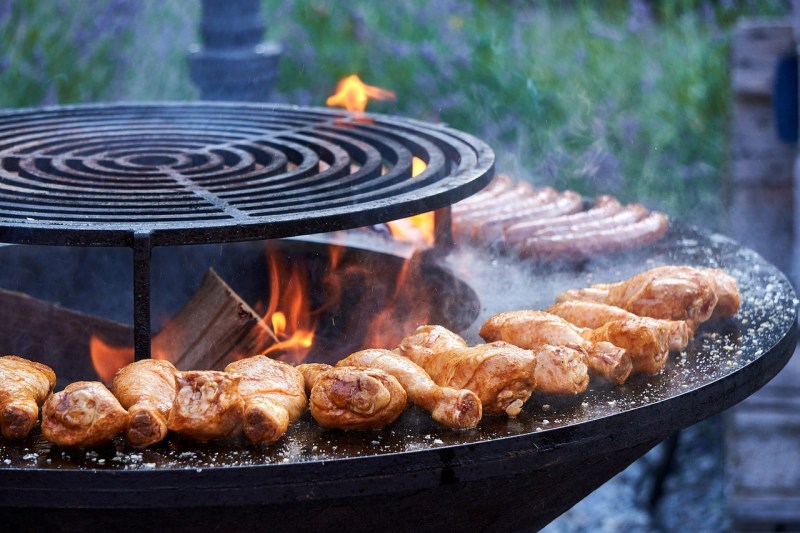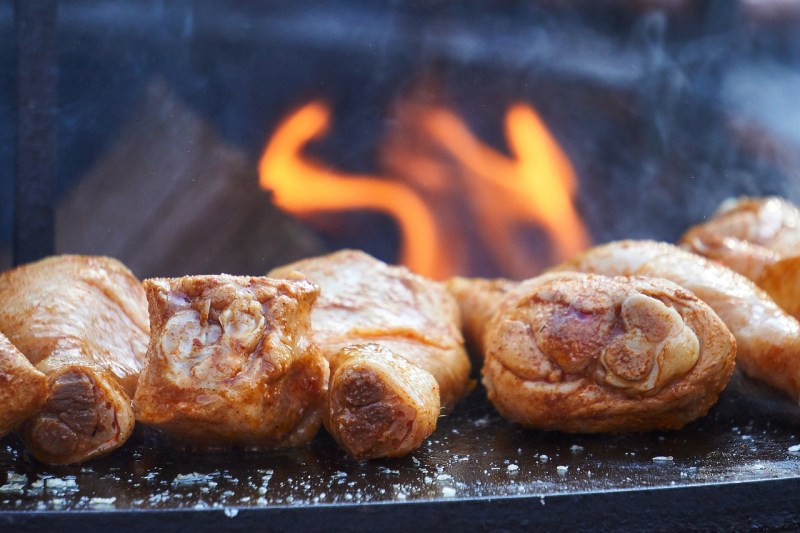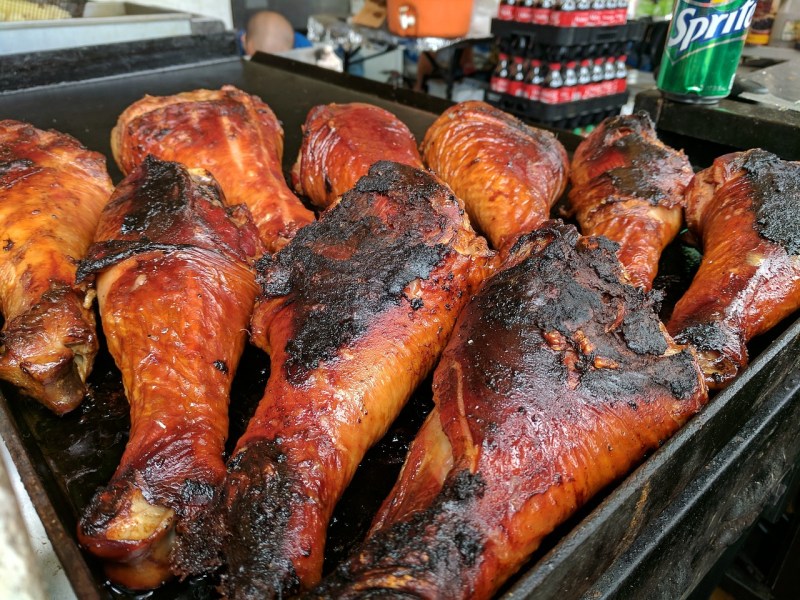When it comes to poultry, people tend to lean one of two ways. They either don’t care much for the dark meat, or they get in early for first dibs on a drumstick. If you’re the type of person who’s never really reached for a chicken leg, one bite of a grilled chicken drumstick just might change your mind about what your fork hits first.
Since there’s not a lot of meat on the bone, chicken legs are often sold in packs of 8, 10, 20, or more. Weighing in at about 4 ounces each, they’re typically the most economical part of the bird. You can find legs for about a buck a pound and sometimes close to half that price on sale, making them a great value. But even though they’re not the meatiest or most expensive part of the chicken, when cooked properly, they’re arguably the most flavorful. Perfect for cooking on the grill, especially on occasions like the Fourth of July.

How long should you grill drumsticks?
When cooking chicken, it’s important not to watch the clock, but instead, to cook it to a safe internal temperature.
The safe internal temperature for chicken drumsticks is 165 degrees Fahrenheit. You can use an instant-read thermometer or a digital probe thermometer to check the chicken’s doneness, but you should always check the temperature to prevent yourself from getting sick, or worse, getting someone else sick.
A 400 degrees Fahrenheit grill can cook drumsticks in about 25 minutes. But just because it’s possible to cook them in under a half-hour, it doesn’t mean you need to rush the process.
Chicken legs are a muscular dark meat portion. The meat is firm, flavorful, and packed with collagen. The collagen slowly starts melting and turning into gelatin (think concentrated chicken broth) at 160 degrees Fahrenheit and will continue to melt and add flavor until it hits an internal temperature of about 180 degrees Fahrenheit.
Another great thing about grilling chicken legs or other dark chicken meat is that it’s more forgiving to cook than the breast or white meat. Dark meat is not as susceptible to drying out over the dry heat of the grill. This is a good thing because when you cook it to be a bit more well done, it actually concentrates and intensifies the flavor of the meat, which makes it irresistible to some.

How do you grill drumsticks without burning them?
After grilling chicken hundreds of times, I can confidently say that the flames are not your friend when cooking chicken drumsticks.
Don’t get me wrong, grilling is still my preferred method for cooking chicken, but cooking directly over scorching flames can leave the chicken skin burnt and unappetizing with the interior barely cooked through.
Most gas grills have a bun rack that seldom gets used. But it’s the perfect place for allowing chicken legs to both roast and grill at the same time. The bun rack is usually about 6 inches above your grill’s grates, so it’s the perfect distance from the flames.
If you don't have a bun rack, we'll discuss a method called "two-zone cooking," which is the most effective way to grill drumsticks without burning them.
Step 1: Find a place on the grill, like the bun rack, where the chicken drumsticks can still get plenty of heat without being kissed by the grill’s flames.
Step 2: If your gas grill doesn't have a bun rack, light one or two burners only and place the chicken over the area where the other, unlit burner would normally be blazing.
Step 3: With a charcoal grill, push the charcoal to one side of the grill and cook the chicken on the side opposite of the hot coals.
Step 4: Rotate the chicken legs frequently while grilling to make sure they cook evenly.
Step 5: Save the sauce for the very end. If you must add barbecue sauce, do so in the last 3 to 5 minutes of cooking, and keep an eye on it as the sugars in barbecue sauce can burn quickly.

Should I boil drumsticks before grilling?
There’s really no good reason to boil drumsticks before grilling.
The whole purpose of boiling drumsticks before grilling them would be to make sure they are cooked to a safe internal temperature. We’ve already established that your chicken legs should be monitored and cooked to a minimum of 165 degrees Fahrenheit, so pre-boiling is unnecessary.

To marinate or not to marinate?
Marinating chicken drumsticks isn't a completely necessary step, but it is one you should take for the absolute best flavor and texture. Depending on the flavor profile you're going for, a marinade can be made with any number of herbs and spices and doesn't have to take hours to do. Even a 30 minute marinade will provide a much more flavorful, tender piece of chicken.

Tips and tricks for grilling chicken legs
- Seasoning ahead of time adds more flavor to the meat. Even one hour can make a big difference, but up to 24 hours is ideal.
- Look for rubs and seasonings that are less likely to burn. Anything containing sugars will eventually burn unless you’re extremely careful.
- Grilled chicken legs are great when made ahead. Once cooked, they will last up to three days in the refrigerator, making them great for meal prep.
Hopefully, you will consider grilling chicken drumsticks the next time you fire up the grill, like this July Fourth holiday. If you still prefer light meat over dark meat, once you learn how to grill chicken breasts, you will pretty much be an ace at grilling all things chicken.




